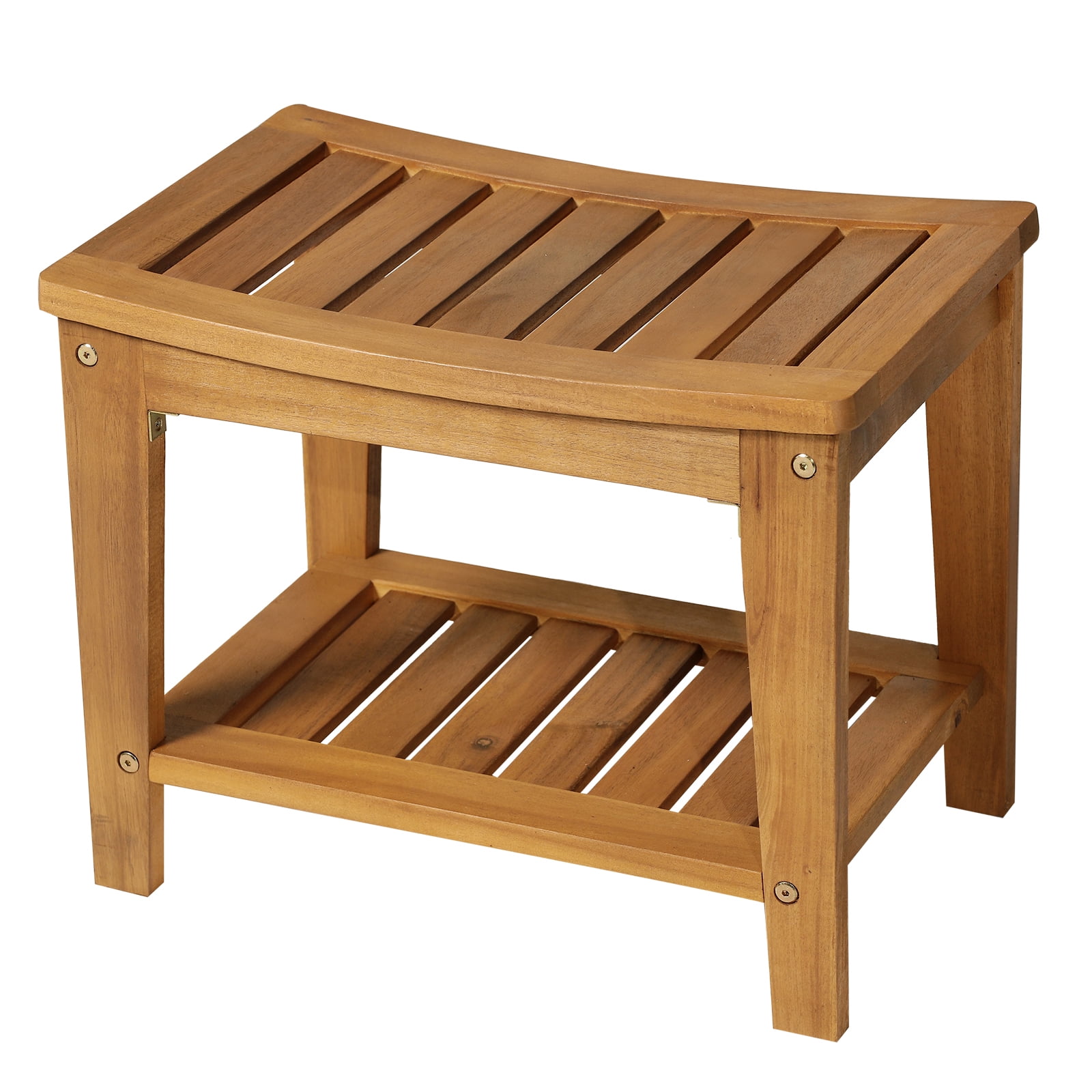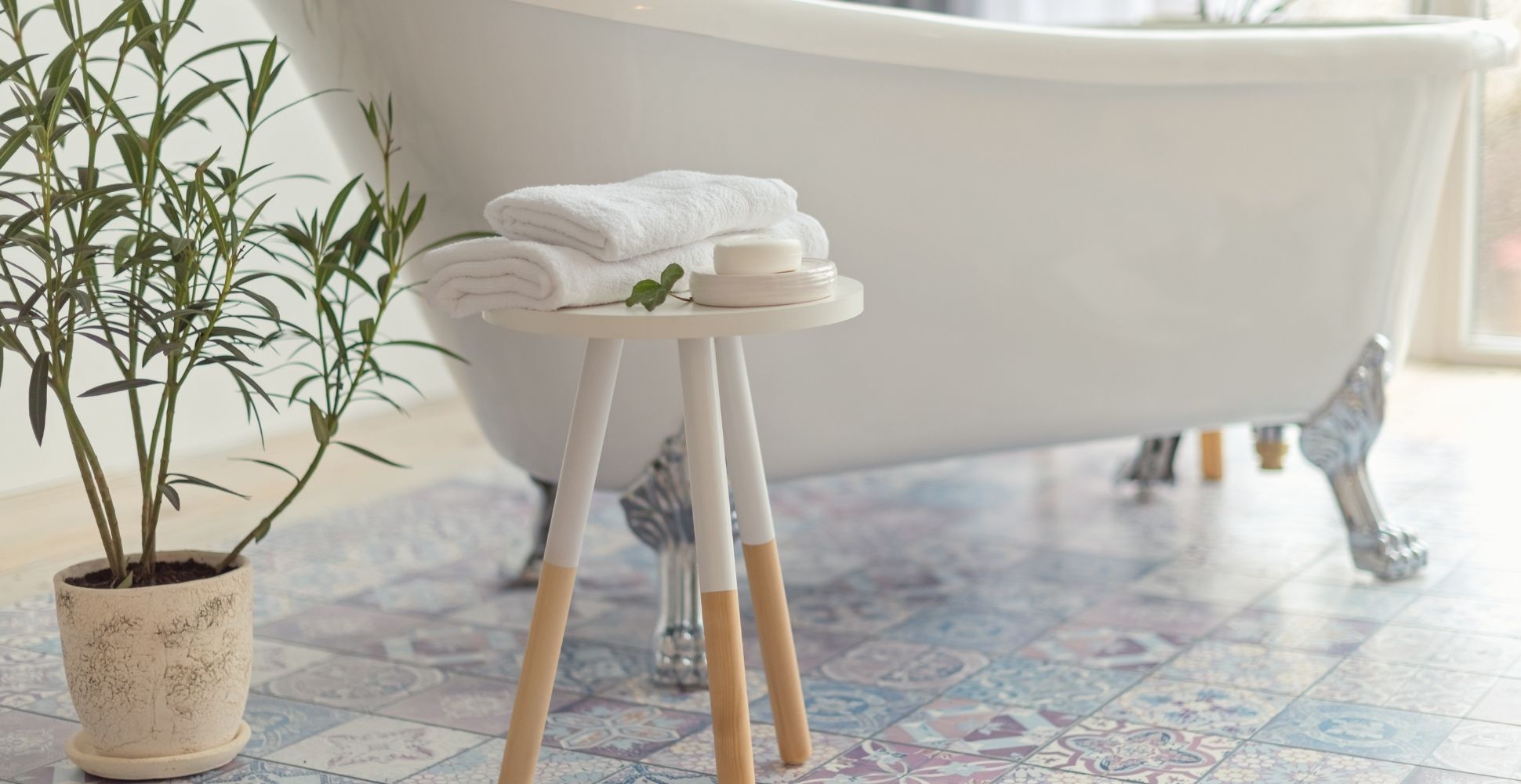Types of Small Wooden Stools for Bathrooms: Small Wooden Stool For Bathroom

Small wooden stools are a versatile and stylish addition to any bathroom, offering a range of practical benefits and aesthetic appeal. They can serve as a step stool for reaching high shelves, a vanity stool for applying makeup, or an accent piece to add a touch of warmth and natural beauty to the space.
Types of Small Wooden Stools
Different types of small wooden stools cater to specific bathroom needs and preferences.
- Step stools are designed primarily for reaching high areas, making them ideal for small bathrooms where space is limited. They typically have a single step and a sturdy platform, providing a stable base for standing.
- Vanity stools are designed for sitting while applying makeup or grooming. They often have a cushioned seat for added comfort and a stylish design that complements the vanity area.
- Accent stools are decorative pieces that add a touch of style and personality to the bathroom. They can be used as a side table for holding towels or toiletries or as a decorative element to enhance the overall aesthetic.
Advantages and Disadvantages of Different Types of Small Wooden Stools
Each type of small wooden stool offers distinct advantages and disadvantages based on functionality, aesthetics, and durability.
- Step stools provide a practical solution for reaching high areas but may lack the comfort and style of other types.
- Vanity stools offer comfort and style but may not be as practical for reaching high areas.
- Accent stools add a decorative touch but may not be as functional as other types.
Materials Used for Constructing Small Wooden Stools
The materials used for constructing small wooden stools can significantly impact their durability, aesthetics, and cost.
- Wood types: Common wood types used for small wooden stools include oak, maple, cherry, and pine. Oak is known for its durability and rich color, while maple is prized for its hardness and beautiful grain patterns. Cherry is known for its warm reddish-brown color, and pine is a more affordable option with a softer grain.
- Finishes: Finishes can enhance the aesthetics and durability of wooden stools. Common finishes include paint, stain, and varnish. Paint provides a smooth, even surface and comes in a wide range of colors. Stain enhances the natural beauty of the wood by highlighting its grain patterns. Varnish provides a protective coating that helps prevent scratches and moisture damage.
- Decorative elements: Decorative elements can add a touch of personality to small wooden stools. Common decorative elements include carvings, inlays, and metal accents. Carvings can add intricate details to the stool’s surface, while inlays can create beautiful patterns using different materials. Metal accents can add a touch of sophistication and durability.
Choosing the Right Small Wooden Stool for Your Bathroom

Selecting the perfect small wooden stool for your bathroom involves considering several factors to ensure it complements your space and serves its intended purpose. From size and height to style and functionality, careful consideration will lead to a harmonious and practical addition to your bathroom.
Factors to Consider When Choosing a Small Wooden Stool
- Size: Measure the available space in your bathroom to determine the ideal stool size. Consider the width, depth, and height of the stool to ensure it fits comfortably and doesn’t obstruct movement.
- Height: The stool’s height should be suitable for its intended use. For example, a stool used for reaching high shelves should be taller than one used for sitting.
- Style: The stool’s style should complement the overall aesthetic of your bathroom. Consider the existing décor, color scheme, and materials used in the space.
- Functionality: Determine the primary purpose of the stool. Will it be used for sitting, reaching items, or both? Consider features like a non-slip surface, storage compartments, or a built-in handle.
- Material: Opt for durable and moisture-resistant wood types like teak, cedar, or oak. These woods are naturally resistant to water damage and can withstand the humid environment of a bathroom.
- Finish: Choose a finish that complements your bathroom’s style and color scheme. Consider options like natural wood, stained, or painted finishes.
Integrating a Wooden Stool into Different Bathroom Layouts and Décor Themes, Small wooden stool for bathroom
A small wooden stool can seamlessly integrate into various bathroom layouts and décor themes.
- Modern Bathrooms: Choose a minimalist stool with clean lines and a simple design. Opt for a natural wood finish or a sleek, painted finish in a neutral color.
- Traditional Bathrooms: Opt for a stool with intricate carvings or a distressed finish. Consider a darker wood stain to complement traditional bathroom fixtures and décor.
- Rustic Bathrooms: Choose a stool with a rustic, weathered finish. Consider using reclaimed wood or a stool with a natural bark finish.
- Contemporary Bathrooms: Select a stool with a modern design and bold color. Consider a geometric shape or a unique material like bamboo or rattan.
Ensuring the Stool Complements Existing Furniture and Fixtures
To maintain a cohesive aesthetic, choose a stool that complements the existing furniture and fixtures in your bathroom.
- Color: The stool’s color should complement the dominant color scheme in the bathroom. Consider matching the stool’s color to the vanity, towel rack, or other accessories.
- Material: The stool’s material should be similar to other materials used in the bathroom. For example, if the vanity is made of wood, choose a wooden stool.
- Style: The stool’s style should complement the overall design aesthetic of the bathroom. Consider choosing a stool with similar details or motifs to other bathroom fixtures.
Practical Uses of Small Wooden Stools in Bathrooms

Small wooden stools offer a surprising range of practical uses in bathrooms, going beyond just providing additional seating. They can be versatile additions that enhance both functionality and aesthetics.
Enhancing Accessibility
Small wooden stools can significantly improve accessibility for individuals with limited mobility or height challenges.
- Reaching High Shelves: A stool can provide a stable platform to reach items stored on high shelves, reducing the need to strain or stretch, which can be especially helpful for people with limited mobility or height.
- Assisting with Getting In and Out of the Tub or Shower: A sturdy stool placed near the tub or shower can provide a secure handhold and support for getting in and out, making it easier and safer for individuals with balance issues or reduced strength.
- Providing a Safe and Stable Surface for Shaving: A stool placed in front of the mirror can offer a comfortable and secure surface for shaving, reducing the risk of falls or slips, especially for individuals with limited balance.
Organizing Bathroom Essentials
Small wooden stools can be used to create additional storage space in a bathroom.
- Storing Towels and Linens: A stool placed next to the bathtub or shower can hold rolled-up towels or folded washcloths, keeping them within easy reach.
- Displaying Decorative Items: A stool can serve as a platform to display decorative items like plants, candles, or decorative baskets, adding visual interest to the bathroom.
- Creating a Dedicated Makeup Station: A small stool can be used to create a designated makeup station in a bathroom, providing a dedicated space for applying makeup and storing makeup brushes and accessories.
Adding a Touch of Warmth and Texture
Wooden stools can enhance the visual appeal of a bathroom by adding warmth, texture, and visual interest.
- Complementing Existing Decor: A wooden stool can complement the existing decor of a bathroom, especially if it features natural materials like wood, stone, or bamboo.
- Creating a Focal Point: A stool placed in a strategic location can draw attention and create a focal point in a bathroom, adding visual interest and enhancing the overall design.
- Adding a Rustic Charm: Wooden stools with a rustic finish can add a touch of charm and warmth to a bathroom, creating a cozy and inviting atmosphere.
